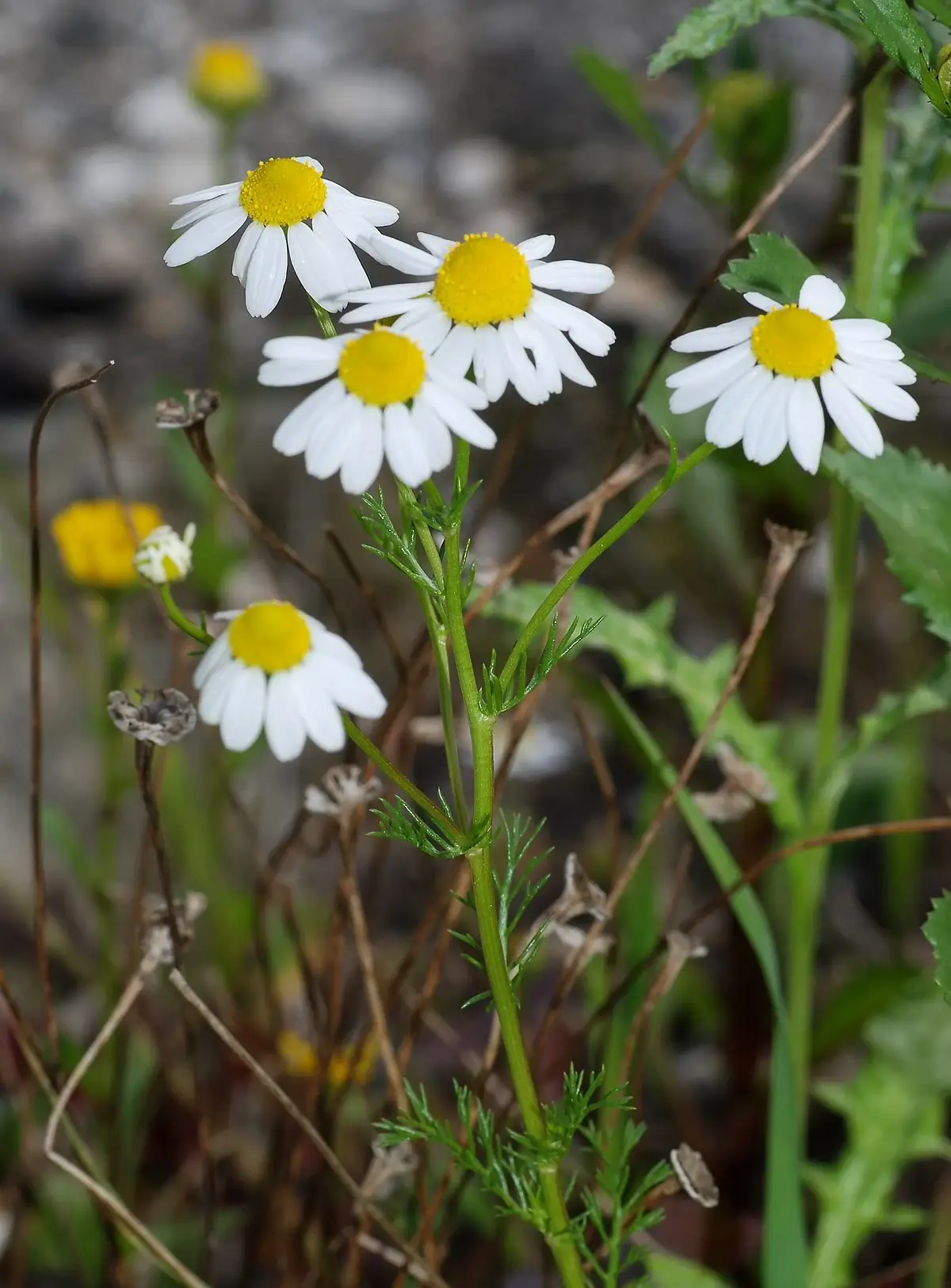Chamomile Flower Powder Facts


Chamomile Flower Powder: A Versatile Herbal Wonder
Chamomile flower powder, derived from Matricaria chamomilla (also known as Chamomilla recutita), is a popular herbal remedy with a wide range of uses. This fragrant, daisy-like flower has been used for centuries in traditional medicine and continues to be valued for its therapeutic properties.
Discover the Marvels of Chamomile Flower Powder
The chamomile plant is a humble yet powerful herb known for its myriad benefits. Chamomile flower powder, derived from this plant, is cherished for its soothing properties and is a staple in herbal remedies. In this article, we'll delve into the cultivation, processing, and numerous benefits of chamomile flower powder.
The Origins and Cultivation of Chamomile
Chamomile is native to Europe and Western Asia, but it now grows across the globe. It thrives in well-drained soil with plenty of sunlight. The plant is relatively low maintenance, making it a favorite among gardeners.
Seeds
Chamomile seeds are very small and fine. They are typically mixed with sand for easier sowing, as they need light to germinate and should not be covered with soil.
Planting Chamomile

It's best to start chamomile seeds indoors about six weeks before the last frost, or sow them directly into the garden once the danger of frost has passed. Keep the soil consistently moist until germination, which typically occurs within one to two weeks.
First Growth
When chamomile seeds germinate, which usually takes 7 to 14 days, they produce small seedlings with delicate, ferny foliage. The young plants have thin, shallow roots and start to develop their characteristic finely divided leaves.
Growing Conditions
Chamomile prefers sandy loam soil with a pH between 5.5 and 7.5. It requires full sun exposure but can tolerate partial shade. The plant can tolerate temperatures between 7°C to 26°C and requires 400 to 1400 mm of annual rainfall.
Mature Plant

As the chamomile plant matures:
- It grows into an erect, branched annual plant, reaching up to 2 feet tall.
- The stems are adorned with sparse, alternate, finely divided (double pinnate) leaves that can grow up to 3 inches long.
- The foliage has an aromatic scent but a bitter taste.
- In early to midsummer, the plant begins producing its characteristic flowers.
Flowering Stage
The mature chamomile plant produces numerous daisy-like flowers:
- Each flower head (capitulum) consists of a domed central cone of bright golden yellow tubular florets.
- Surrounding the center are 10-25 white ray flowers, giving it the appearance of a small daisy.
- The flowers have a strong, aromatic apple-like fragrance.
- Blooming continues until late summer or frost if the plants are deadheaded.
After flowering, the plant produces yellowish-brown seeds (achenes) if allowed to go to seed. German chamomile is known to self-seed readily if flower heads are not removed.
Remember that chamomile plants grow best in full sun or partial shade, prefer well-drained soil, and are relatively low-maintenance once established.
The plant is drought-resistant and can survive in dry conditions, although regular watering promotes better growth.
Chamomile is an annual herb that thrives in various conditions. It grows best in full sun and well-drained soil.
Harvesting Chamomile
Chamomile flowers are ready for harvest when they are fully open. Harvesting is best done in the morning after the dew has dried but before the heat of the day. Simply pluck the blossoms and spread them out to dry in a warm, shady place.
Cultivation of Chamomile
Chamomile is an annual herb that thrives in various conditions. It grows best in full sun and well-drained soil. The plant can tolerate temperatures between 7°C to 26°C and requires 400 to 1400 mm of annual rainfall. Chamomile seeds are tiny and should be sown on the surface of the soil, as they need light to germinate
Chamomile likes space. Give it a pot at least 6 inches deep. Make sure the pot has lots of holes. These holes let water drain out.
Use good soil for your chamomile. Mix potting soil with some fertilizer. Wet the soil a bit before you plant.
Want to move your chamomile? Do it when it's young. The plant should be only 2 to 3 inches tall. Older plants don't like moving.
To transplant, dig carefully. Go under and around the roots. Be gentle.
Don't move chamomile when it's flowering. The plant won't like it. Older seedlings don't transplant well.
Remember, chamomile is tough. But it still needs your care. Give it the right pot, soil, and timing. Your chamomile will thank you with pretty flowers.
The plant grows quickly, reaching heights of 15-60 cm with branched, erect stems. Chamomile flowers bloom in early to midsummer, producing a prolific number of solitary terminal flowers. The flowers have a characteristic apple-like fragrance and are attractive to bees and butterflies.
Processing Chamomile for Herbal Use
Harvesting chamomile flowers is a crucial step in producing high-quality powder. The flowers should be collected when they are near full bloom for the best quality. This typically occurs 50-65 days after planting.
Once harvested, the chamomile flowers need to be dried to preserve their beneficial properties. After drying, they are ground into a fine powder, which is then used in various applications.
Drying Chamomile Flowers
After harvesting, the flowers are dried to preserve their medicinal properties. To dry chamomile, lay the flowers in a single layer on a mesh screen or a clean cloth. Allow them to air dry in a warm, well-ventilated area away from direct sunlight. This process can take a few days, depending on humidity levels.
Various other drying methods can be used, including air-drying, oven-drying, or freeze-drying. The drying process can affect the content of beneficial compounds in the flowers.
Grinding into Powder
Once dried, the flowers are ground into a fine powder. This powder can then be used to make teas, capsules, or added to various products. It can be stored in an airtight container for up to a year, retaining the plant's therapeutic benefits.
Uses and Benefits of Chamomile Flower Powder
Chamomile flower powder is renowned for its calming effects and health benefits. It's a versatile herb with a long history of use in traditional medicine and is incredibly versatile offering numerous health benefits:
1. Digestive Health: It's commonly used to treat stomach cramps, irritable bowel syndrome, and indigestion. Chamomile flower powder can soothe the digestive system, alleviating symptoms of indigestion, bloating, and gas. Its anti-inflammatory properties help relax the muscles of the gastrointestinal tract, providing relief from discomfort.
2. Sleep Aid: One of the most well-known benefits of chamomile is its ability to promote relaxation and improve sleep quality. Chamomile contains apigenin, an antioxidant that binds to receptors in the brain, reducing anxiety and promoting sleep.
3. Skin Care: When applied topically, chamomile can soothe skin irritations and help with conditions like eczema. Chamomile's anti-inflammatory and antioxidant properties make it beneficial for skin health. It can reduce redness, irritation, and inflammation, making it a popular ingredient in skincare products.
4. Anti-inflammatory: Chamomile contains compounds with anti-inflammatory properties, making it useful for various inflammatory conditions. Regular consumption of chamomile tea or powder can boost the immune system. Its antibacterial properties help fight infections and support overall health.
5. Anxiety and Stress Relief: Regular consumption of chamomile tea may help reduce anxiety and stress levels.
6. Wound Healing: Chamomile has been shown to speed up wound healing and reduce muscle spasms.
Chemical Composition
Chamomile flower powder contains over 120 chemical constituents, including flavonoids, terpenoids, and essential oils. Key compounds include bisabolol, chamazulene, and apigenin, which contribute to its medicinal properties.
Chamomile in Everyday Use
Chamomile flower powder is versatile and can be incorporated into various daily routines.
Chamomile Tea
Making chamomile tea is one of the simplest ways to enjoy its benefits. Simply steep a teaspoon of chamomile powder in hot water for 5-10 minutes, strain, and enjoy a calming beverage.
Herbal Remedies
Chamomile powder can be added to homemade salves and balms for topical use. Its soothing properties are great for treating minor skin irritations and promoting relaxation.
Culinary Uses
Chamomile powder can also be used in baking and cooking. Add it to cookies, cakes, or even smoothies for a subtle floral flavor and added health benefits.
Safety and Precautions
While generally safe, chamomile can cause allergic reactions in people sensitive to plants in the Asteraceae family. It may also interact with certain medications, particularly blood thinners. Always consult with a healthcare professional before using chamomile medicinally, especially if you have existing health conditions or are taking medications.
Chamomile flower powder is a natural, versatile herb with a long history of use. From promoting relaxation to supporting digestive health, this humble flower offers a wide range of potential benefits. Whether brewed as a tea, applied topically, or taken as a supplement, chamomile continues to be a popular choice for those seeking natural remedies.



